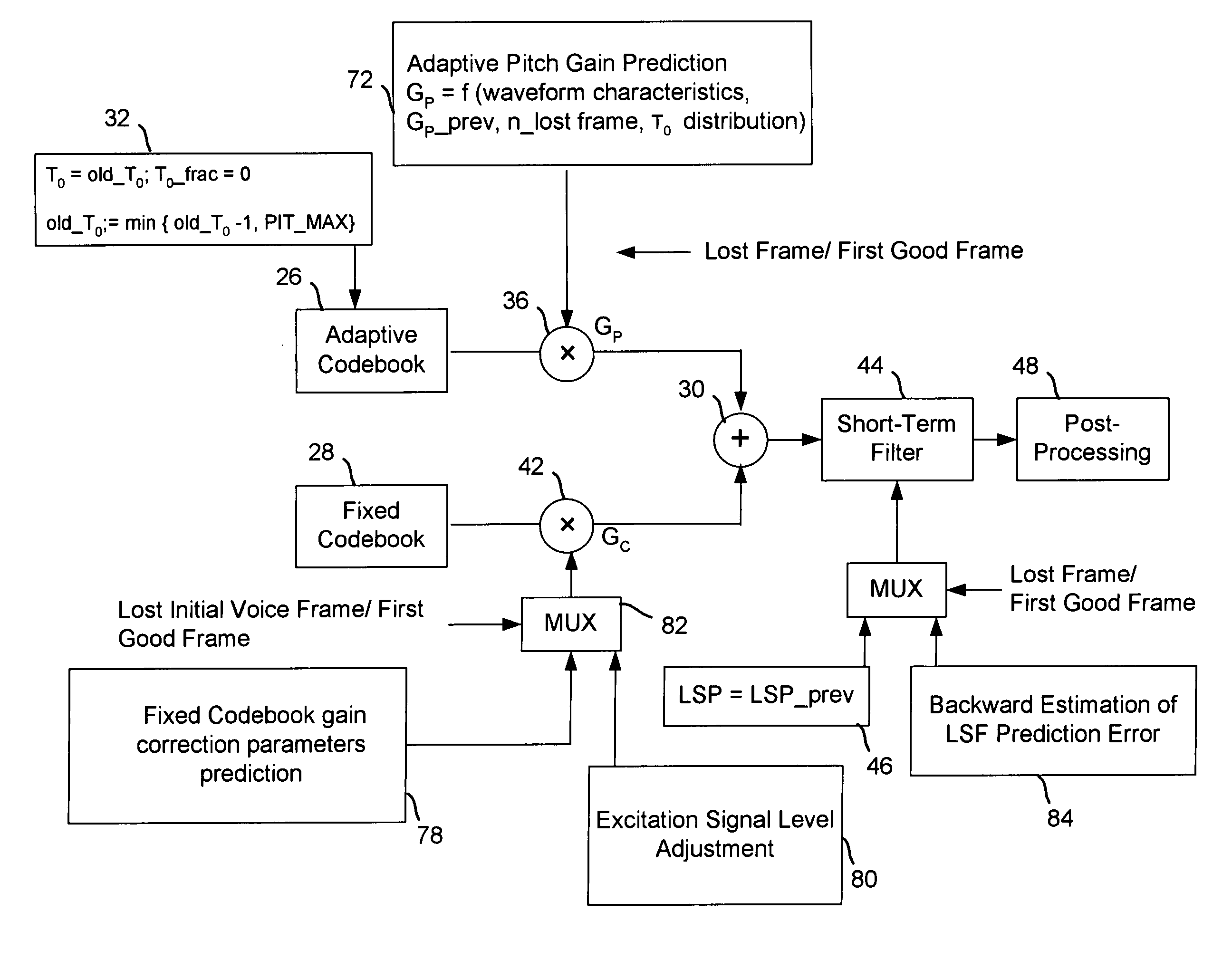Packet loss concealment for a conjugate structure algebraic code excited linear prediction decoder
a technology of algebraic code and excited linear prediction, applied in the field of algebraic code excited linear prediction decoder, can solve the problems of packet loss concealment, packets may arrive out of order, delay jitter,
- Summary
- Abstract
- Description
- Claims
- Application Information
AI Technical Summary
Benefits of technology
Problems solved by technology
Method used
Image
Examples
case 1
[0059]The backwards prediction error parameters are determined as follows. For k=1 to nupdate_frame, switch (nlost_frame) according to the following cases:[0060] α=0.75; β=0.25[0061]Case 2: If (k=1) then α=0.75; β=0.25[0062]else α=0.5; β=0.5[0063]Case 3: If (k=1) then α=0.75; β=0.25[0064]If (k=2) then α=0.5; β=0.5[0065]else α=0.25; β=0.75[0066]Default: If (k=1) then α=0.9; β=0.1[0067]If (k=2) then α=0.75; β=0.25[0068]If (k=3) then α=0.5; β=0.5[0069]else α=0.25; β=0.75
[0070]The method of the alternative embodiment uses data from the decoder bitstream prior to being decoded in order to reconstruct lost speech in PLC due to frame erasures (packet loss) by classifying the waveform. The alternative embodiment is particularly suited for speech synthesis when the first frame of speech is lost and the previously received packet contains noise. When the packet The alternative embodiment for PLC is to use a method of classifying the waveform into five different classes: noise, silence, status...
PUM
 Login to View More
Login to View More Abstract
Description
Claims
Application Information
 Login to View More
Login to View More - R&D
- Intellectual Property
- Life Sciences
- Materials
- Tech Scout
- Unparalleled Data Quality
- Higher Quality Content
- 60% Fewer Hallucinations
Browse by: Latest US Patents, China's latest patents, Technical Efficacy Thesaurus, Application Domain, Technology Topic, Popular Technical Reports.
© 2025 PatSnap. All rights reserved.Legal|Privacy policy|Modern Slavery Act Transparency Statement|Sitemap|About US| Contact US: help@patsnap.com



